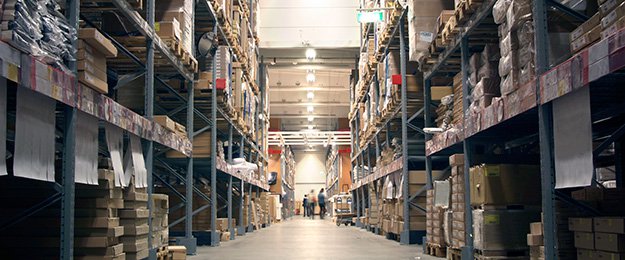
Size Does Matter...When It Comes to SKUs
Derek Cribley | 28 February 2013
I just had a discussion with a colleague in our consulting group about a client who wanted him to design a picking area. The problem was the client didn’t have any product size information. To this client, the size of a case was “case size,” and an individual item was smaller than “case size.” Now a single, descriptive unit for product size might work if the warehouse had only one product; however, this one was filled with over 15,000 different SKUs, and it was reportedly filled to the rim with less than 10% free space in the racking. (Hmm, maybe the lack of size information was contributing to the lack of free space.)
I know you would think a professionally-run distribution operation should know better than to not have product size information, but it happens more often than you think. Regrettably, many distribution operations have little information about the size of the product they are distributing. I think the challenge comes from the never-ending stream of new products and new packaging being thrown at these distribution centers. I can only imagine it would seem to be a monumental, continuous effort to know all 15,000 product sizes if you are starting from scratch. But knowing the size has many advantages well beyond the initial profiling or design stage for which this customer was asking. For example, with good product size information:
- You can automatically select appropriate packaging or pre-cube orders to fit in designated cartons.
- You can more easily assign new items or re-slot exiting items to appropriate storage areas.
- You can better predetermine and control your shipping costs.
So how do the companies that do a good job of maintaining this information do it? I have seen a few that are good at it, and they all have a disciplined process in place to collect the information at receiving. It makes sense; any item that doesn’t have size information in the database is sized before it is put away. Depending on the size of the operation, they either have a dedicated CubiScan station set up to collect and audit item sizes or an entire auditing area with multiple stations.
The determination to measure or audit an item’s size is a rule set up in their warehouse management system software. I have also seen operations that use mobile sizing stations to collect information on product that is already put away. This method is typically employed for a customer that has made the decision to start collecting the information but already has a warehouse full of unmeasured items in inventory. For this situation, there are sources for temporarily renting the cubing equipment. Rental of the equipment is also a good idea for operations testing out the cubing equipment before they make a purchase.
Whether you have a few SKUs or thousands, it is important to gather product size information as soon as possible. It is a critical factor in analyzing and improving your operations; distribution will be more efficient, storage more organized, and shipping less costly. So if you are running a distribution operation or helping design one, remember, product size does matter.
Derek was with Bastian Solutions for more than 20 years. He originally served as a project manager and design engineer, before being promoted to Manager of the Systems and Controls groups and eventually to his current role, Director of Advanced Technology. He enjoyed the fast-paced projects and solving customer's problems with solutions customized to their operations. He is proud of our employees and their dedication to make every project successful for our customers.
Comments
Jean says:
8/28/2018 10:08 AM
Totally agreed, however this can be the major issue for the warehouse with lots of free or equipped space.
Regards!
Jean.H
svseq.com
Leave a Reply
Your email address will not be published.
Comment
Thank you for your comment.